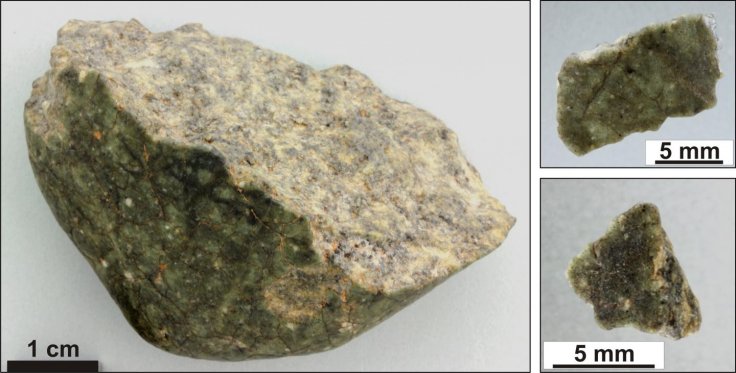More we explore earth, more surprising facts appear and it looks like there are many mysteries hidden in this world that we are still not aware of. But when a team of researchers looked into their new discovery, it triggered more curiosity among them.
The scientists found a new mineral--'donwilhelmsite'--in a meteorite from the Moon. But the surprising fact is this mineral appears to form under high pressures and researchers believe that it may play a key role in the rock cycle deep with the earth.
The mineral is mostly made of calcium, aluminum, silicon, and oxygen atoms. As per the researchers, it was found in a meteorite called Oued Awlitis 001 that was discovered in 2014 in the Western Sahara desert.

The newly-found mineral was named after a lunar geologist Don Wilhelms, who was part of the research team which analyzed the data and samples brought back to earth through the Apollo missions.
The Discovery of Surprising Mineral
The team of scientists used transmission electron microscopes to analyze the sample collected from the meteorite. Later, their study revealed the existence of the new mineral. According to the researchers, the mineral, donwilhemsite, was specifically discovered in the meteorite's shock melt zones. In that particular area, the rock melts in the temperature and immense pressure as it hurtles into the atmosphere of the earth, collides with the surface, and then cools down before becoming solid again.

These conditions are very similar to those found deep within the earth's mantle, giving a glimpse into the kinds of minerals that might be inside the planet where researchers cannot easily study them. The scientists involved in finding the donwilhelmsite said in their study, which was published in the journal American Mineralogist that the mineral forms "in the earth's mantle during deep recycling of aluminous crustal materials, and is a key host for Al and Ca of subducted sediments in most of the transition zone and the uppermost lower mantle (460–700 km)".
The researchers believe that since the meteoroid is composed of rocks similar to those which create the crust of the earth, the mineral probably plays an important role in transporting the sediments from the crust, in the form of early tectonic plated being shoved deep into the earth, through the transition zone—that divides the lower and upper mantle of the planet.









